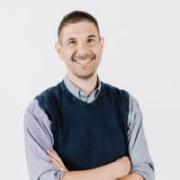

Teradata and Cohesity DataProtect compete in data management solutions. Teradata has an upper hand in data analytics due to its extensive analytics capabilities, while Cohesity leads in data protection with its robust backup and restore functionalities.
Features: Teradata stands out for its parallel processing that handles large data volumes effectively. It also has fast query execution with indexing features and is adaptable across on-premises and cloud environments. Cohesity DataProtect excels in backup and restore functionalities, offering ease of administration with strong integration with cloud storage and VMware. It provides unified backup solutions and is notable for its rapid VM restoration.
Room for Improvement: Teradata faces challenges in transaction-level processing, scalability, and costs. Improvement is needed in cloud integration and handling unstructured data. Cohesity could enhance its restore speed and documentation. Users desire better replication capabilities and reporting features.
Ease of Deployment and Customer Service: Teradata's deployment across on-premises and cloud environments is extensive, though its setup complexity is noted. It has mixed customer service reviews, praised for support but sometimes delayed. Cohesity boasts easy deployment with hybrid cloud compatibility and favorable customer service but could improve legacy system support.
Pricing and ROI: Teradata is robust but expensive, appreciated for its performance and ROI in large-scale analytics. Cohesity offers cost-effective pricing compared to competitors, valued for its simple licensing and strong data recovery and backup capabilities.
Using Cohesity DataProtect is easier to manage, and it simplifies various components into one architecture, reducing the need for extensive human resources to manage backups.
We have realized a return on investment, with a reduction of staff from 27 to eight, and our current return on investment is approximately 14%.
The support can depend on the region, and for larger customers, I advise having a Technical Account Manager for better assistance.
The customer support for Teradata has been great.
Customer support is very good, rated eight out of ten under our essential agreement.
The technical support from Teradata is quite advanced.
Cohesity DataProtect is built on a scale-out architecture, which means it can effectively scale to meet various needs.
This expansion can occur without incurring downtime or taking systems offline.
Teradata's scalability is great; it's been awesome.
Scalability is complex as you need to purchase a license and coordinate with Teradata for additional disk space and CPU.
On the whole, any problems were more related to hardware limitations rather than issues with Cohesity DataProtect itself.
I find the stability to be almost a ten out of ten.
The workload management and software maturity provide a reliable system.
While there are improvements to be made, such as providing support for older systems like IBM iSeries and tandem systems from HP, the solution overall shifts from older methods to modern practices.
Unlike SQL and Oracle, which have in-built replication capabilities, we don't have similar functionality with Teradata.
If Teradata could provide a list of certified experts, that would be fantastic.
I find Cohesity DataProtect to be expensive.
Teradata is much more expensive than SQL, which is well-performed and cheaper.
Initially, it may seem expensive compared to similar cloud databases, however, it offers significant value in performance, stability, and overall output once in use.
We spent roughly $295,000 on setup costs.
The platform is based on a scale-out architecture with each node having compute, RAM, SSD, and HDD.
Some of the most valuable features of Cohesity DataProtect for me include instant mass restore, anomaly detection, and its ability to handle large data volumes effectively.
Teradata's security helps our organization meet compliance requirements such as GDPR and IFRS, and it is particularly essential for revenue contracting or revenue recognition.
The data mover is valuable over the last two years as it allows us to achieve data replication to our disaster recovery systems.
| Product | Market Share (%) |
|---|---|
| Cohesity DataProtect | 2.7% |
| Teradata | 0.3% |
| Other | 97.0% |


| Company Size | Count |
|---|---|
| Small Business | 19 |
| Midsize Enterprise | 22 |
| Large Enterprise | 42 |
| Company Size | Count |
|---|---|
| Small Business | 26 |
| Midsize Enterprise | 12 |
| Large Enterprise | 49 |
What is Cohesity DataProtect?
Cohesity DataProtect is a top-level, sophisticated, software-defined backup and recovery solution created for cloud environments. Cohesity DataProtect is made to hyperscale and is one the most thorough policy-based protection solutions available on the market today.
Cohesity DataProtect melds multiple-point products into a single software that is able to be deployed as on-premise or consumed as a service.
Top Features:
Hyperscale made easy: Cohesity DataProtect improves data protection by doing away with the need for backup silos and administers backup and recovery with a single user-friendly, easy-to-understand interface. Cohesity DataProtect provides extensive 24/7 enterprise-class protection for a large, varying set of sources, including virtual and physical servers, NAS and SaaS workloads, relational and distributed databases, and traditional and containerized applications.
Super fast recovery: Cohesity DataProtect offers near-zero recovery point objectives (RPOs) and near-instant recovery time objectives (RTOs) to satisfy your business service-level agreements (SLAs). Using Cohesity Helios’ unified data plane and control plane you can immediately search and recover data on any Cohesity cluster, located anywhere. DataProtect distinctively minimizes downtime by immediately mass restoring any amount of virtual machines (VMs) to any point in time, and lowers data protection costs by as much as 70% or more.
Backup as a Service: Feel free to take advantage of the elasticity of the public cloud and the cost-effective value of Cohesity DataProtect when delivered as a service. When you choose an OPEX option, you can eliminate the need for on-premises hardware. There is a SaaS option that will allow you to very simply configure your backup workloads and immediately begin protecting your vital all-important data and applications.
It’s as easy as: sign-up, connect, and protect!
Ransomware protection: Cohesity DataProtect offers stellar recovery at scale. The solution is so intuitive, it has machine learning-based anomaly detection to stop incidents before they happen. Cohesity DataProtection can provide immutable backups, Datalock write once, read many (WORM), encryption, and role-based access control (RBAC).
Cohesity DataProtect integrates well with many of today’s top solutions, including, but not limited to:
Reviews from Real Users
One reviewer, who is head of IT infrastructure at Kampmann says, “Cohesity really is a Next-Gen Data Management Software,” and goes on to indicate that Cohesity “works flawlessly with easy replication of backups and numerous supported backup sources.”
Another user, who is a senior network engineer at a legal firm, relates that "Cohesity is a robust and feature-rich solution"
Teradata is a powerful tool for handling substantial data volumes with its parallel processing architecture, supporting both cloud and on-premise environments efficiently. It offers impressive capabilities for fast query processing, data integration, and real-time reporting, making it suitable for diverse industrial applications.
Known for its robust parallel processing capabilities, Teradata effectively manages large datasets and provides adaptable deployment across cloud and on-premise setups. It enhances performance and scalability with features like advanced query tuning, workload management, and strong security. Users appreciate its ease of use and automation features which support real-time data reporting. The optimizer and intelligent partitioning help improve query speed and efficiency, while multi-temperature data management optimizes data handling.
What are the key features of Teradata?In the finance, retail, and government sectors, Teradata is employed for data warehousing, business intelligence, and analytical processing. It handles vast datasets for activities like customer behavior modeling and enterprise data integration. Supporting efficient reporting and analytics, Teradata enhances data storage and processing, whether deployed on-premise or on cloud platforms.
We monitor all Backup and Recovery reviews to prevent fraudulent reviews and keep review quality high. We do not post reviews by company employees or direct competitors. We validate each review for authenticity via cross-reference with LinkedIn, and personal follow-up with the reviewer when necessary.